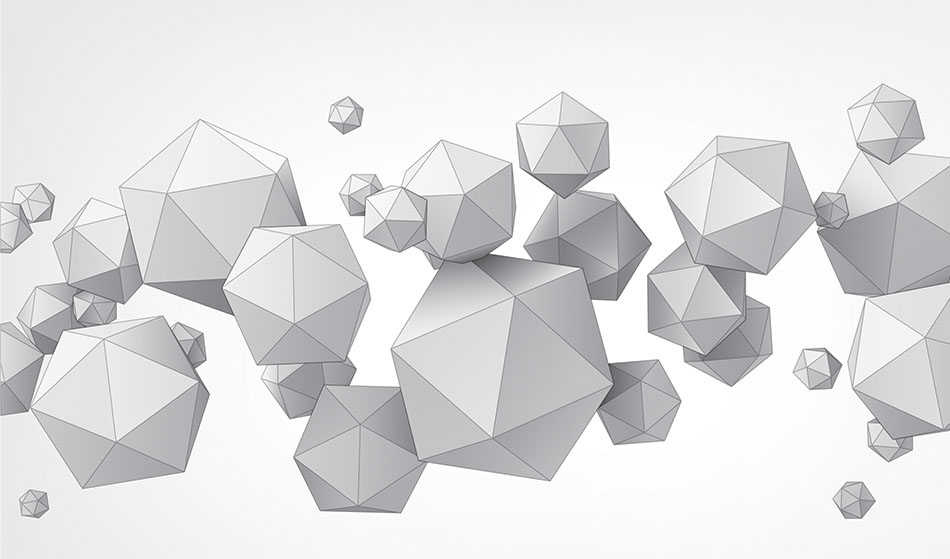The oldest technology developed by humans was pottery – the manipulation of clay and other ceramic materials to create usable and decorative objects such as tiles and vessels. The ceramic material used in pottery for tens of thousands of years was naturally brittle, had complex chemistry and required relatively advanced technologies (such as early kilns) to produce.

archetype / Shutterstock
However, recent advances in our understanding of ceramic chemistry and crystallography, as well as improved production and manufacturing techniques, have enabled us to exploit ceramic class materials for more and more uses (AZoM, 2017).
Among these new understandings of ceramics is a revolutionary conceptualization of their quantum mechanical properties, superconductivity and ferroelectricity. In this way, ceramics may be classified as “quantum materials”. Although a slightly contested term, quantum materials have grown in prominence within the scientific community since the 2016 publication of an article in Nature Physics, “The Rise of Quantum Materials”.
In it, the authors put forward “good reasons to embrace [the field of] quantum materials”, which “provide a common thread linking disparate communities of researchers working on a variety of problems at the frontiers of physics, materials science and engineering” (The Rise of Quantum Materials, 2016).
Quantum materials are any material whose unique or interesting quantum mechanical properties may be usefully studied and applied. While all materials obey the mysterious laws of quantum mechanics at their smallest interactable (quantum) size, quantum materials are especially worthy of scientific attention. Quantum ceramics are interesting due to their potential applications as high-temperature superconductors.
Ceramic Superconductivity
In superconductive materials, electrical resistance totally disappears when the material is lowered to its critical temperature. This is due to the Meissner effect in which magnetic field lines become absent from the material’s interior at critical temperatures, and is unexplainable according to the laws of classical mechanics.
In typical superconductive materials, this temperature is incredibly low, close to absolute zero. However, Georg Bednorz and K. Alex Müller discovered in 1986 that the critical temperature for cuprate-perovskite ceramic materials was only 183 degrees below 0 °C (90 K). For this discovery, they were awarded the Nobel Prize. Materials whose critical temperature is relatively high are named high-temperature superconductors (HTSs), and the highest critical temperature found in a superconductive material so far is in a ceramic made up of mercury, barium, calcium, copper, and oxygen (HgBa2Ca2Cu3O8+δ), 133 K (theoretically it can be as high as 138 K in HgBa2Ca2Cu3O8+δ).
Applications of Ceramic HTSs
Because they require liquid nitrogen rather than liquid helium to cool, HTSs such as ceramics provide a cost-effective method of exploiting the quantum effect of superconductivity. This cost-effectiveness outweighs the additional cost of complex ceramic manufacture (and failure and replacement due to their brittleness) in many applications. The most promising of these is currently in electricity generation and distribution.
Electricity Generation and Distribution
HTSs can be used in electricity generation and distribution to reduce the energy loss caused by moving electrons over a distance to practically zero (or only the energy lost in conversions to conventional conductive materials for distribution). Ceramic HTSs show promise for wind turbine energy storage, where their lower weight and volume reduces the overall costs in construction.
There are also possible uses in future high-performance smart electric grids, where their ability to transmit power with no loss coupled with Internet of Things (IoT) enabled network infrastructure could result in dramatic improvements to entire countries’ energy efficiency.
As well as wind, ceramic HTSs can be used in other forms of power generation, including conventional forms, to maximize the efficiency of those systems. Their use in power storage remains a field of great interest, and there are also researchers working on HTS-based electric motors for vehicles.
The Holbrook Superconductor Project, commissioned for Long Island, USA in 2008, feeds the Long Island electrical substation with 155,000 m of HTS wire manufactured from the ceramic bismuth strontium calcium copper oxide (BSCCO). The wire is chilled by liquid nitrogen in a 600 m-long tunnel and is the first practical application of ceramic HTS in an electricity transmission setting.
Sources
- AZoM (2017). Advanced Ceramics – The Evolution, Classification, Properties, Production, Firing, Finishing and Design of Advanced Ceramics. [online] AZoM.com. Available at: https://www.azom.com/article.aspx?ArticleID=2123 [Accessed 14 Sep. 2019].
- The rise of quantum materials. (2016). Nature Physics, 12(2), pp.105–105.
Disclaimer: The views expressed here are those of the author expressed in their private capacity and do not necessarily represent the views of AZoM.com Limited T/A AZoNetwork the owner and operator of this website. This disclaimer forms part of the Terms and conditions of use of this website.